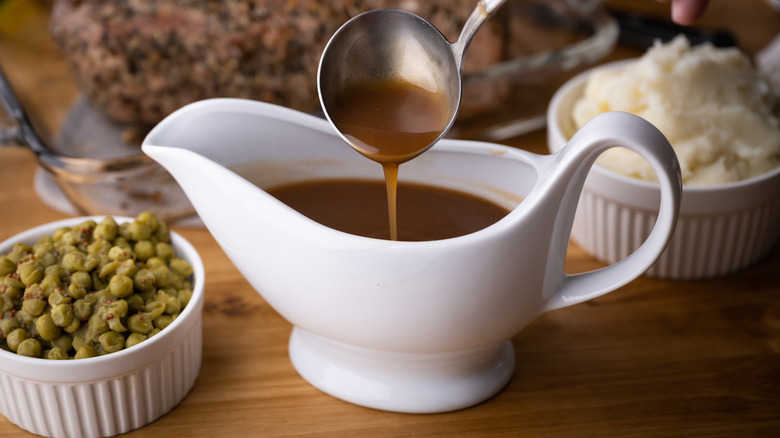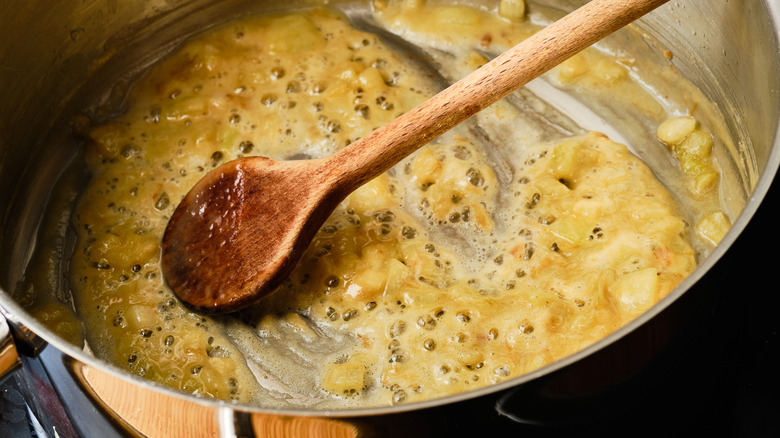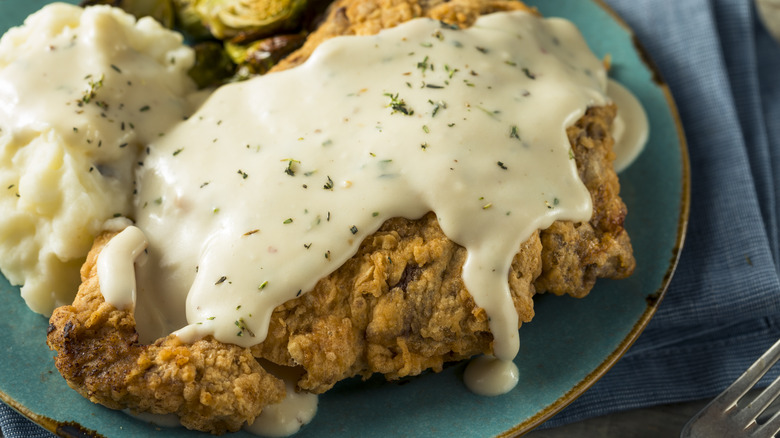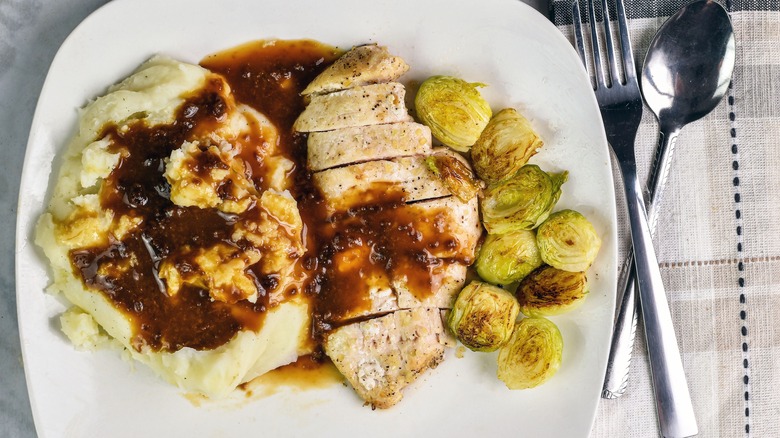The Flour Mistakes That Cause Disappointing Gravy
From rich pours of Southern white gravy for a fluffy batch of biscuits to simple turkey dressings fit for a Thanksgiving feast, a good gravy can make a meal — and a bad one can certainly ruin it. To keep your dishes tasting all-around delicious, let's dig into some common flour mistakes that can lead to a disappointing gravy.
First, let's talk about one dreaded word: Lumpy. It's safe to say no one wants to see their gravy take on this texture. Usually this problem stems from adding flour directly into the gravy's other ingredients while they're all heating on the stove, causing unsavory lumps and a chalky texture. One of the best ways to avoid this is by employing a French cooking tip and using a roux.
This step is essential to help the flour form a thick base for the gravy, as the powdery starch needs to fuse with a liquid so that it doesn't cook unevenly. You can start making a roux by melting some fat in a pan first. While the actual type of fat will depend on the kind of gravy you're making, it's usually butter or pan drippings. From here, gradually whisk in some flour until combined. You'll need a 1:1 ratio of fat to flour, although actual measurements will depend on your recipe. This base will give your gravy a velvety, smooth texture right from the start.
Other surefire ways to thin out a thick gravy
If making a roux doesn't help you avoid a chunky gravy, you can also try turning up the heat on your stove the next time you make the sauce. Add some additional broth or other liquids to your pot too to help thin this mixture out early on and effortlessly break up all that chalky flour.
Next, if you have gotten a little ahead of yourself and made a mistake with your gravy, resulting in even more lumps, there is luckily a quick fix for this common issue. If the texture of your gravy is uneven no matter how many times you whisk the mixture up, you've probably just added too much flour, and it's time to break out a strainer or a sieve. Pour the sauce through this kitchen tool to extract any lumps, and be left with a gravy with that smooth, luxurious texture everyone craves.
Flavor fixes for a bland, tasteless sauce
While rouxs are key to preventing lumps in gravy, a roux can take your sauce to the next level in more ways than one. For example, it also is an essential piece to helping elevate things in the flavor department, preventing gravy from tasting bland or like raw flour, as the taste of the starch burns off and takes on the flavor of the fat in a roux.
If a roux won't do it this time, plenty of other additions can infuse your gravy with hearty, savory flavors. For example, adding a few dashes of other flavorful additions like Worcestershire sauce into a pot of gravy can really infuse the sauce with some umami goodness. Similar additions could be pan drippings from turkey or bacon, or a blend of fragrant veggies like onions and garlic sautéed in butter. Simmering gravy with these flavorful additional ingredients is key to help the taste of the sauce really develop, so don't take the mixture off the stove even when it looks thoroughly incorporated.
And finally, how to liven up a gravy that's too thin
Finally, if you've got issues with your gravy being too thin, you may be able to guess that a roux could also be the unlikely fix. In addition to being a great base for sauces, a roux is also a lovely thickening agent. If your gravy is thin, there might just not be enough flour in the mixture, so making a quick roux and adding it gradually to the rest of your gravy mixture could thicken it up. Still, if you don't want to alter the flavor in your dressing, you could also make a simple slurry to get the job done instead.
Similar to a roux, a slurry is simply a combination of flour with some water or broth. You can add this to your gravy to boost the texture without changing the taste. Slurries are often used as the finishing touch to a dish and are uncooked, so it's a great tool to use to fix broken sauces. Finally, adding in a few tablespoons of cornstarch to get the job done too.
Gravy is usually the final touch on a savory dish, so you want to make sure it shines. By avoiding some simple mistakes, you should steer clear of the most common problems, so keep a few of these ideas in your back pocket.



